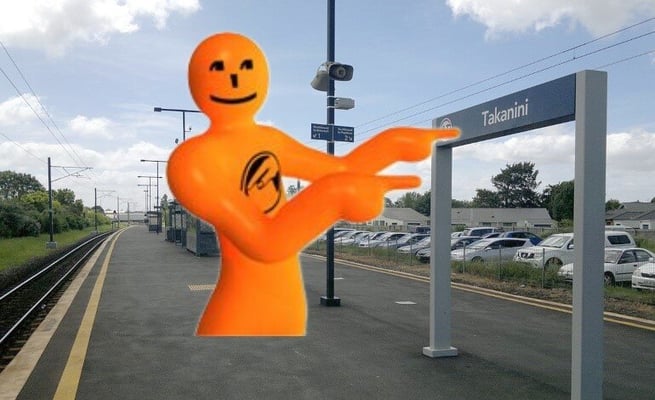Takanini hits big screen of national politics, declared as a new electorate

A new electorate will be contested in this year's election, with confirmation of a new South Auckland seat called Takanini.
The electorate names and boundaries for the next two general elections have been released, with a new electorate established in South Auckland.
That brings the total number of electorates to 72, made up by 65 general and seven Maori seats. And the boundaries of about half of all electorates have undergone changes.
The name of the 11 electorates that have been changed are:
- Whangarei becomes Whangarei
- Helensville becomes Kaipara ki Mahurangi
- Rodney becomes Whangaparaoa
- Manukau East becomes Panmure-Otahuhu
-
Flat Bush, the proposed name for the new electorate, becomes Takanini
- Hunua becomes Port Waikato
- Rimutaka becomes Remutaka
- Port Hills becomes Banks Peninsula
- Dunedin North becomes Dunedin
- Dunedin South becomes Taieri
- Clutha-Southland becomes Southland
These changes mean that seven per cent of New Zealand will be in a new electorate in the 2020 General Elections that is scheduled to start September 19 this year.
Representation Commission Chair Judge Craig Thompson said the new names were either proposed by us or "suggested in public submissions to better describe the redrawn electorate areas.
"Where possible, we have maintained existing electorate boundaries and no changes have been made to 36 electorates.
"Now the boundaries and names have been finalised, we'd encourage people to go to www.vote.nz to check which electorate they are."
Boundaries of 30 general electorates and 11 names have been changed, with the most boundary changes in Auckland, Waikato, Otago, Southland, and Christchurch.
This includes a redraw of the fastest-growing electorate, Selwyn, which loses the Banks Peninsula area to the former Port Hills electorate - which has now renamed the Banks Peninsula.
The new South Auckland electorate is called Takanini, rather than the initially proposed Flat Bush, and draws population from Manurewa, the former Hunua electorate, and Papakura and includes Wattle Downs and Takanini.
To move population southwards to create the new electorate consequential changes have been made to Mt Roskill, Maungakiekie, Manukau East and Manurewa.
The number of Maori electorates remains at seven, but five boundaries have changed, including Tamaki Makaurau gaining an area around Te Atatu South from Te Tai Tokerau and an area to the east of Manurewa and Waiheke Island from Hauraki-Waikato.
A new electorate will be contested in this year's election, with confirmation of a new South Auckland seat called Takanini.
The electorate names and boundaries for the next two general elections have been released, with a new electorate established in South Auckland.
That brings the total number of...
A new electorate will be contested in this year's election, with confirmation of a new South Auckland seat called Takanini.
The electorate names and boundaries for the next two general elections have been released, with a new electorate established in South Auckland.
That brings the total number of electorates to 72, made up by 65 general and seven Maori seats. And the boundaries of about half of all electorates have undergone changes.
The name of the 11 electorates that have been changed are:
- Whangarei becomes Whangarei
- Helensville becomes Kaipara ki Mahurangi
- Rodney becomes Whangaparaoa
- Manukau East becomes Panmure-Otahuhu
-
Flat Bush, the proposed name for the new electorate, becomes Takanini
- Hunua becomes Port Waikato
- Rimutaka becomes Remutaka
- Port Hills becomes Banks Peninsula
- Dunedin North becomes Dunedin
- Dunedin South becomes Taieri
- Clutha-Southland becomes Southland
These changes mean that seven per cent of New Zealand will be in a new electorate in the 2020 General Elections that is scheduled to start September 19 this year.
Representation Commission Chair Judge Craig Thompson said the new names were either proposed by us or "suggested in public submissions to better describe the redrawn electorate areas.
"Where possible, we have maintained existing electorate boundaries and no changes have been made to 36 electorates.
"Now the boundaries and names have been finalised, we'd encourage people to go to www.vote.nz to check which electorate they are."
Boundaries of 30 general electorates and 11 names have been changed, with the most boundary changes in Auckland, Waikato, Otago, Southland, and Christchurch.
This includes a redraw of the fastest-growing electorate, Selwyn, which loses the Banks Peninsula area to the former Port Hills electorate - which has now renamed the Banks Peninsula.
The new South Auckland electorate is called Takanini, rather than the initially proposed Flat Bush, and draws population from Manurewa, the former Hunua electorate, and Papakura and includes Wattle Downs and Takanini.
To move population southwards to create the new electorate consequential changes have been made to Mt Roskill, Maungakiekie, Manukau East and Manurewa.
The number of Maori electorates remains at seven, but five boundaries have changed, including Tamaki Makaurau gaining an area around Te Atatu South from Te Tai Tokerau and an area to the east of Manurewa and Waiheke Island from Hauraki-Waikato.









Leave a Comment